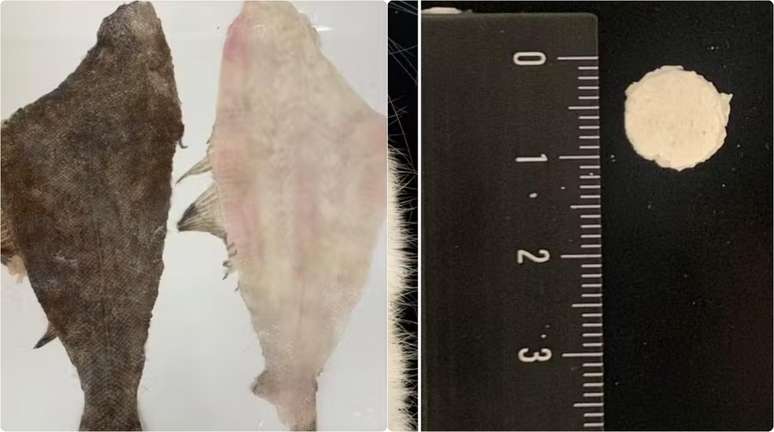Developed at the Unifesp campus in Baixada Santista, the dressing is designed to be used once, without needing to be changed.
Researchers at the Laboratory of Biomaterials and Tissue Engineering (Labetec) at the Federal University of São Paulo (Unifesp) have created a revolutionary dressing to treat wounds such as burns and ulcers. This dressing is made with collagen extracted from fish skin and produced using 3D printing technology, taking advantage of the resources of marine biodiversity. The information comes from g1.
Developed at the Baixada Santista campus, the dressing is designed for single-use and to be integrated directly into the wound. The collagen in the dressing facilitates tissue regeneration and accelerates the healing process.
Ana Claudia Muniz Renno, one of the leaders of the research, explained that, although fish skin has been used before, this is the first time that collagen has been extracted and used with 3D printing technology.
“The real innovation here is combining marine collagen with 3D printing, a modern technique that has not been addressed in the literature or in previous patents,” Ana Claudia pointed out to the publication.
Collagen, being the most abundant protein in the human body, was chosen for its excellent compatibility with human tissue. The dressing uses collagen extracted from flounder, an easily accessible fish, instead of using the entire fish skin, which could increase the risk of contamination. This method also simplifies the extraction process and reduces costs and waste compared to obtaining collagen from beef skin.
After the fish skin is extracted, it is cleaned and treated with acids to remove impurities, resulting in collagen. This collagen is then used to produce the bandage through 3D printing, with the printer set to create the bandage in the desired shape. The research is currently in the animal testing phase and is expected to begin human trials soon.
Tests on mice showed that those treated with the new bandage recovered 50% faster than those untreated. Although pain cannot be directly assessed in rats due to the use of analgesics for ethical reasons, it is hoped that the dressing could also help relieve pain in humans, limiting infections and promoting more efficient healing.
The project, which has the support of the São Paulo Research Foundation (Fapesp), is in the final analysis phase of the results and will be published soon. In addition to Ana Claudia, the research is coordinated by Professor Renata Neves Granito.
Source: Terra
Ben Stock is a lifestyle journalist and author at Gossipify. He writes about topics such as health, wellness, travel, food and home decor. He provides practical advice and inspiration to improve well-being, keeps readers up to date with latest lifestyle news and trends, known for his engaging writing style, in-depth analysis and unique perspectives.







